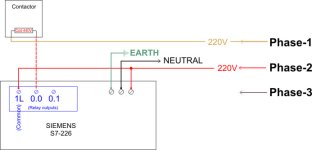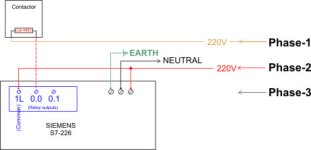Nomanjamil
Guest
N
I was checking the manual, and found that the Relay type module can stand up to 2Amp of load, 24VDCv and upto 220VAC.
What I am confused about, I have to use some existing 440VAC contactors.
Now when I check the manual, I found nothing helpful, more confusingly, under the ISOLATION heading of the tech blah blah, It says it says "750VAC for 1 minute".
My doubt is still there, can it work if 1Phase is given direct to the contactor and the other 220VAC passes thru the Relay contact of the S7-226 module? would it matter if this is done for longer periods, supposing 5 minutes or so?
is there a formula or something to calculate this? or perhaps someone can share thier personal experience?
Thanks and Kindest Regards,
What I am confused about, I have to use some existing 440VAC contactors.
Now when I check the manual, I found nothing helpful, more confusingly, under the ISOLATION heading of the tech blah blah, It says it says "750VAC for 1 minute".
My doubt is still there, can it work if 1Phase is given direct to the contactor and the other 220VAC passes thru the Relay contact of the S7-226 module? would it matter if this is done for longer periods, supposing 5 minutes or so?
is there a formula or something to calculate this? or perhaps someone can share thier personal experience?
Thanks and Kindest Regards,





